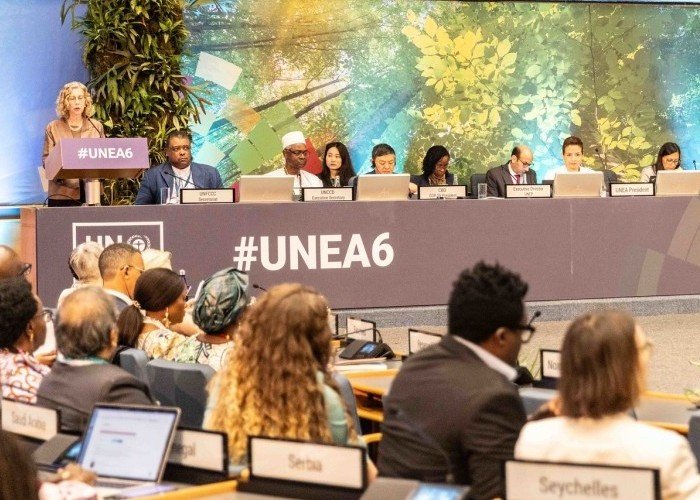Cooling credits: Sold as a “cool” solution to climate change, buyers (and everyone) should beware
As published in Illuminem
Carbon credits have come under fire recently, as regulators, analysts and media take a closer look to see if and how well these credits represent actual benefits for climate. There’s a new credit on the scene that is even less well understood - paying to offset warming by dispersing particles in the atmosphere to reflect sunlight.
Referencing science fiction, a new crop of startup entrepreneurs claim to have found a fast path to climate recovery, and will sell it (to you) in affordable increments, or “cooling credits”. Buy a credit and help cool the climate. Does the pitch sound too good to be true? That’s because it is.
Their offerings are associated with a class of rapid climate interventions that reduce warming by dispersing particles to increase the reflection of sunlight from the atmosphere and clouds, sometimes called “solar radiation modification” (SRM). Due to their potential to reduce catastrophic near-term climate changes, scientists have recommended researching these approaches in recent reports from the UN Environment Programme, as part of the UN Ozone Assessment, and in an open letter signed by over 100 climate scientists.
Research in this area of climate science is critical. The influence of aerosols on the atmosphere and climate is one of the largest sources of uncertainty in near-term climate change (IPCC-AR6). Understanding the relationship between aerosols and climate is similar in nature to understanding the complex and variable influence of a new medicine on the human body, requiring a great deal of research to maximize efficacy and minimize (considerable) side-effect risks.
To help shed more light on these issues, I joined with two experts in the field to tease out the science underlying “cooling credits” in a paper, and we found a few fundamental problems, not with researching SRM, but with the idea of being able to quantify and sell a cooling credit.
Meaningful quantification is not possible with today’s science
In the current state of climate and atmospheric science, given the complexity and variability of the atmosphere, it is not possible to quantify specific warming reduction effects from specific releases of aerosols into the atmosphere with any reasonable degree of certainty (or, in the cases where the aerosols affect clouds, even whether the effects are positive or negative). This is critical science to target and improve.
The variability of the atmosphere means that consistent quantification of small, discrete inputs may never be possible
The effects of aerosols in the atmosphere on climate warming vary with scale, geography, meteorology and other factors. Because these effects are not uniform, the effects of particular small releases or aerosols cannot be quantified in a reasonably consistent way for the purpose of valuing a credit or offset.
Benefits and risks vary with location, scale and meteorology, so anything but a centrally coordinated approach is likely to be less effective and carry greater risks of unintended side effects.
Atmospheric aerosols introduce other effects, including potential effects on weather and ecosystems. Potential negative effects vary depending on scale, geography, meteorology and other factors. Because of this, any use of these techniques that is optimized for safety would require highly coordinated or centralized execution to deliver benefits and minimize risks. As such, they will likely never be suitable candidates for a market of independent actors such as that of an open credit market system.
The above factors apply to any approaches to reducing climate warming that involve putting things into the atmosphere
These include dispersing aerosols to directly reflect sunlight from the atmosphere, dispersing aerosols to alter clouds to change their reflection or release of solar energy, or dispersing aerosols that interact with methane in the atmosphere to convert it to CO2 to reduce relative near-term climate warming.
What does this all mean? It means that credits for dispersing material into the atmosphere to offset climate change 1) are deceptive, 2) are indifferent to, and externalizing the risks of, negative side-effects, and 3) support a business model dependent on scaling activities irrespective of 1 and 2.
Given that the stakes of the rapid escalation of activity, driven by the pursuit of fast money, are high, what can be done? There are current government and industry efforts to set standards for carbon credits and offsets, including the U.S. Federal Trade Commission Green Guides, The Integrity Council for the Voluntary Carbon Market, and the Voluntary Carbon Market Integrity Initiative. These are opportunities for tamping down unsupported credits early.
Importantly, research is needed to understand, evaluate, and regulate atmospheric climate interventions. The most critical way to prevent harm - financial, environmental, and human - is with evidence, transparency and vigilance. These require significant investment in monitoring the atmosphere and predicting the effects of influences on it.
Apart from this, is there anything you can do? Don’t buy “cooling credits”. Don’t invest in companies marketing cooling credits. Don’t provide a platform to entrepreneurs marketing what is effectively a scam. Do support public-interest research to understand the realities of climate interventions and help the world monitor and govern any use of them. Climate intervention research is as crucial as ever – but everyone who cares about the climate should be aware of the “cooling credit” sales pitch and the damage it might cause.




